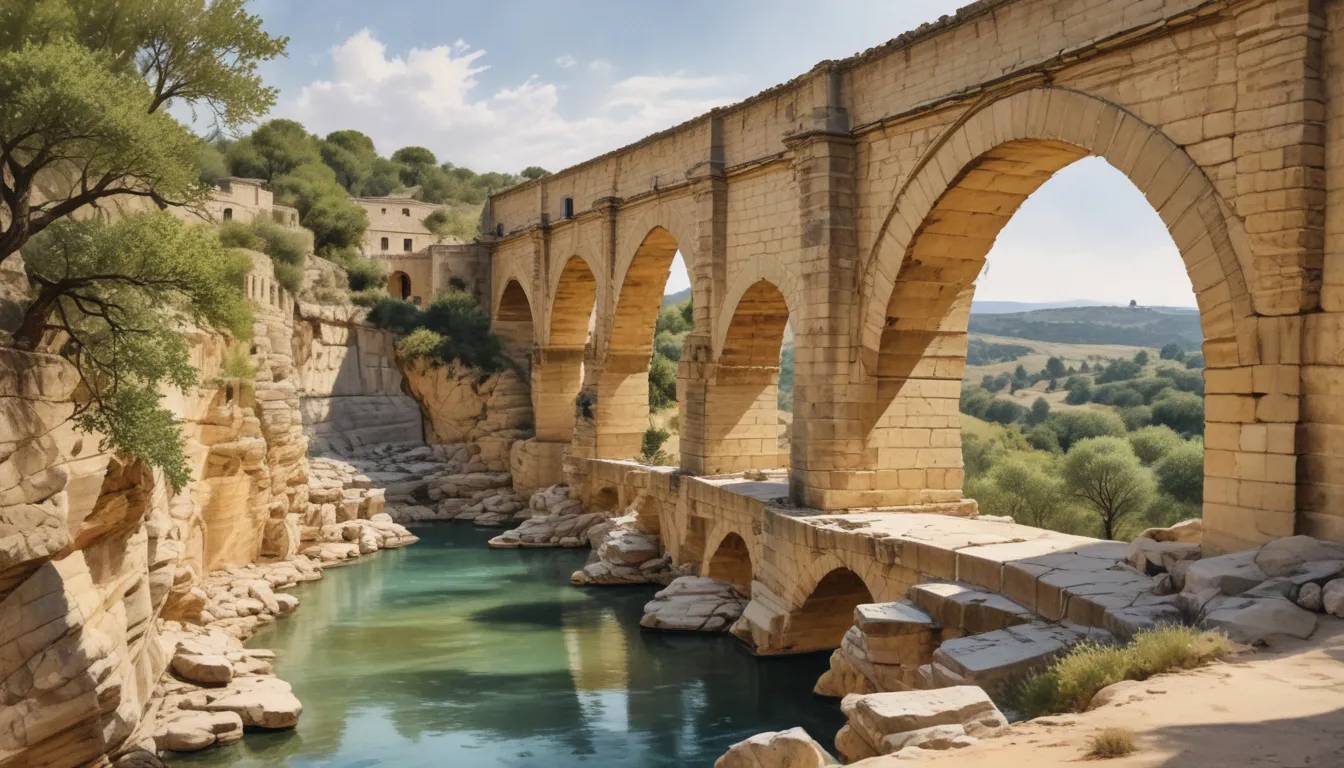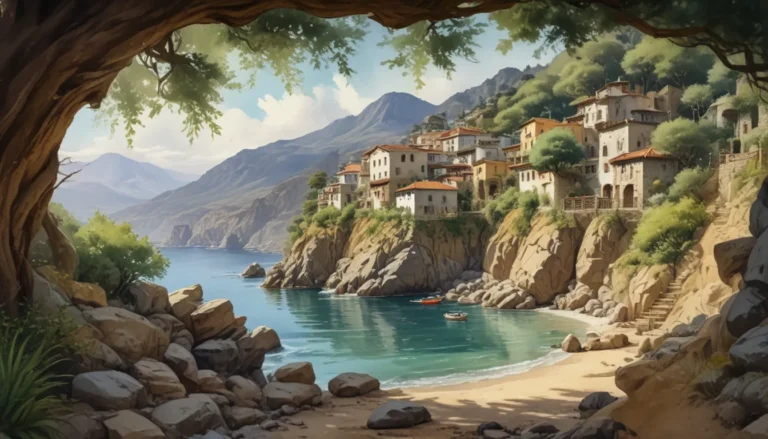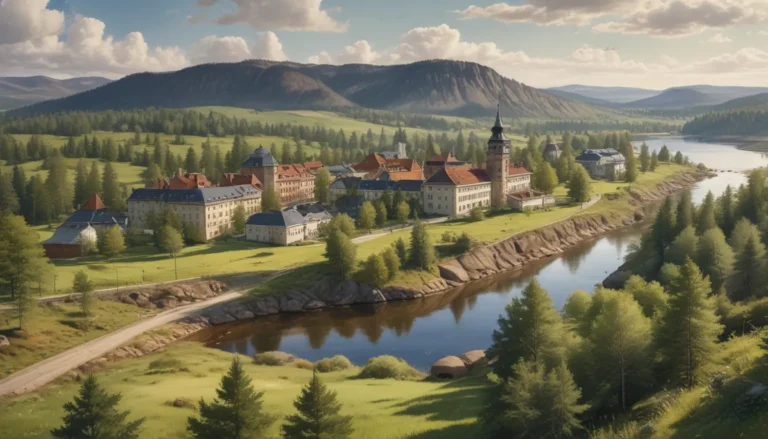The images in our articles are for illustrative purposes only and may not exactly match the content. They are intended to capture your interest and complement the text, not to replace it.
Are you intrigued by ancient engineering marvels? If so, Pont du Gard awaits your curiosity. This aqueduct bridge in southern France is more than just a relic of the past; it is a living testament to the ingenuity of the Romans. As a UNESCO World Heritage site, Pont du Gard attracts visitors from around the globe, eager to explore its history and architectural brilliance. Join us on a journey to unravel the stories and secrets behind this ancient marvel, piece by piece.
Exploring Pont du Gard
Pont du Gard is an ancient Roman aqueduct bridge that spans the Gardon River in southern France. Constructed in the first century AD, it remains one of the best-preserved monuments of its kind in Europe. This grand structure was a crucial part of a nearly 50 km long aqueduct system that supplied water to the Roman colony of Nemausus, now known as Nîmes.
A Glimpse into History
- Construction: Built around 50 AD under Emperor Claudius, Pont du Gard was designed to transport water from the springs near Uzès to the Roman colony.
- Engineering Marvel: Standing at a height of 48.8 meters (160 feet), Pont du Gard is the tallest of all Roman aqueduct bridges, showcasing remarkable engineering skills.
- Cultural Impact: Beyond its functional purpose, the aqueduct served as a symbol of Roman architectural and engineering prowess, highlighting the empire’s ability to harness nature for its citizens’ benefit.
The Architectural Marvels
- Three Tiers: Pont du Gard features three tiers of arches, with a total of 52 arches in varying sizes that demonstrate precision engineering.
- Materials Used: Constructed without mortar, the bridge utilized limestone blocks cut precisely to fit together, ensuring durability and stability.
- Water Channel: At the top tier, a water channel called a specus carried water across the river, lined with waterproof mortar to prevent leaks.
Pont du Gard as a UNESCO World Heritage Site
In 1985, Pont du Gard was designated a UNESCO World Heritage site, recognizing its historical, architectural, and engineering significance. Since then, efforts have been made to preserve and maintain this ancient aqueduct, including controlling vegetation growth and monitoring structural stability.
Discovering Pont du Gard
Today, Pont du Gard is a popular tourist destination that offers a range of activities and events for visitors:
- Tourist Attraction: Visitors from across the globe come to admire the grandeur and beauty of Pont du Gard.
- Activities: Explore a museum dedicated to the aqueduct’s history, hike on scenic trails, or kayak under the bridge for a unique perspective.
- Events: The site hosts cultural events such as light shows, exhibitions, and concerts throughout the year, enhancing its appeal as a vibrant historical landmark.
Environmental and Educational Impact
- Ecosystem: Pont du Gard is part of a protected ecosystem, showcasing a balance between historical preservation and natural conservation.
- Educational Programs: The site offers educational programs for students and researchers, emphasizing its historical, architectural, and environmental significance.
- Sustainable Tourism: Efforts to promote sustainable tourism ensure that visitors can enjoy the site while minimizing their environmental impact.
Pont du Gard in Popular Culture
Over the centuries, Pont du Gard has left its mark on various forms of art and literature:
- Film and Literature: The aqueduct has been featured in films, documentaries, and literary works, underscoring its enduring appeal and influence.
- Inspiration for Artists: Countless painters, photographers, and writers have drawn inspiration from this ancient structure, captivated by its beauty and historical significance.
The Enduring Legacy of Pont du Gard
- Engineering Legacy: Pont du Gard remains a testament to Roman engineering ingenuity, influencing the development of aqueducts and bridges throughout history.
- Cultural Heritage: It embodies the cultural heritage of the Roman Empire, serving as a link to the past and a reminder of its vast influence.
- Educational Value: The site serves as an outdoor classroom, offering insights into Roman history, architecture, engineering, and water management.
- Symbol of Endurance: Pont du Gard symbolizes the enduring nature of human creations, inspiring awe and admiration for nearly two millennia.
- Global Recognition: Its status as a UNESCO World Heritage site underscores its global significance, attracting scholars, historians, and tourists alike.
- Community Engagement: Local communities are involved in the site’s preservation, fostering ownership and pride in this remarkable monument.
Embracing History with Pont du Gard
As we conclude our exploration of Pont du Gard, we reflect on its ancient secrets and the Roman engineering prowess that crafted this masterpiece. Beyond being a bridge or an aqueduct, Pont du Gard symbolizes the foresight and creativity of the Romans. Every fact about this marvel unfolds a layer of history that continues to captivate and educate enthusiasts of history, engineering, and art alike. Let’s cherish Pont du Gard in our conversations, sharing its stories and lessons with future generations to keep its legacy alive.
Frequently Asked Questions
- What is Pont du Gard? – Pont du Gard is an ancient Roman aqueduct bridge in southern France that supplied water to the Roman colony of Nemausus.
- How tall is Pont du Gard? – Towering at about 48 meters, Pont du Gard is one of the tallest Roman aqueducts, ensuring a smooth flow of water over 50 kilometers.
- Can you walk across Pont du Gard? – Visitors can walk across the lower level of Pont du Gard, offering a unique experience of this ancient structure.
- What makes Pont du Gard special? – Pont du Gard’s remarkable preservation, grandeur, and engineering precision set it apart among Roman aqueducts.
- Is there a fee to visit Pont du Gard? – Visiting the site is free, with parking fees contributing to its maintenance and preservation.
- What activities can you do at Pont du Gard? – Besides admiring the aqueduct, visitors can explore a museum, hike on trails, kayak under the bridge, and attend seasonal events.
- How was Pont du Gard built without modern technology? – Roman engineers relied on precision, skill, mathematics, and physics to construct Pont du Gard, showcasing their advanced knowledge and techniques.
Your Contributions Make a Difference
Every fact on Pont du Gard is contributed by real users like you, ensuring a wealth of diverse insights and information. Our commitment to quality and authenticity drives our dedication to delivering trustworthy and engaging content. Trust in our shared exploration and learning journey as we uncover the wonders of Pont du Gard together.






